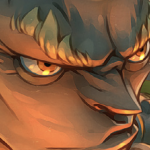Not a member of Pastebin yet?
Sign Up,
it unlocks many cool features!
- # CNC Wood Inlays: Quick Guide
- ## Equipment & Bits
- - **Tapered Ball Nose Bit**: Amana (6.2°), SpeTool (5.26°), 1/4" shank.
- - **Clearing Bit**: 1/8” upcut.
- ## Software Settings (VCarve Pro)
- - **Toolpath**: VCarve with bit switched to etching bit in software. Diameter = twice the radius.
- ## Cutting Depths
- - **Pocket (Negative)**: Start depth 0.0”, flat depth 0.25”.
- - **Inlay (Positive)**: Start depth 0.27”, flat depth 0.01”.
- ## Operation
- - **Speed**: Run tapered ball nose bit at 30-40 ipm, keep it slow.
- - **Orientation**: Flip horizontally one of the parts for alignment.
- ## Materials
- - **Blanks**: Use 1/2” for positives.
- ## Glue-Up
- - **Testing**: Perform test cuts with slight variations in start depths. Glue inlay, let dry, and inspect by cutting in half.
- - **Pressing**: Use a shop press for even pressure during glue-up.
- ### Note:
- Achieving a zero glue gap involves precision in cutting depths and careful glue-up. Adjust based on test results for optimal fit.
- 1/8" endmill (I use this for the smaller clearing pass areas on the 15 degree bit cuts)
- * Pass Depth: 0.30 in
- * Stepover: 0.10 in
- * Speed: 19,200 rpm
- * Feed Rate: 50 ipm
- 1/4" endmill (I use this for the larger clearing pass areas on the 15 degree bit cuts)
- * Pass Depth: 0.30 in
- * Stepover: 0.05 in
- * Speed: 19,200 rpm
- * Feed Rate: 40 ipm
Advertisement
Add Comment
Please, Sign In to add comment

